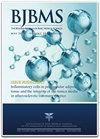Intravenous immunoglobulin: A potential treatment for the post-acute sequelae of SARS-Cov-2 infection?
IF 3.4
4区 医学
Q2 MEDICINE, RESEARCH & EXPERIMENTAL
引用次数: 5
Abstract
Following the recovery from an initial infection with SARS-CoV-2, a recent meta-analysis of almost 1 million patients worldwide suggested that an estimated 43% of patients had experienced a variety of sequelae [1]. Furthermore, numerous studies indicate that patients can develop somatic, musculoskeletal, neuropsychiatric, cardiovascular, dermatologic, renal, hepatic and gastrointestinal manifestations that are heterogeneous and vary in intensity and duration (for up to 12 months) [2,3]. The CDC has defined this phenomenon as “long-term symptoms that might be experienced weeks to months after primary infection with SARS-CoV-2, the virus that causes COVID-19 [4]” and proposed designations for this syndrome have included long covid, long chronic covid syndrome, chronic covid, post-COVID-19 syndrome, post-acute covid-19 syndrome and long – haulers [5]. On Feb. 23, 2021, Dr. Francis Collins indicated that the persistent symptoms that occur in patients after recovery from the initial infection could be designated, post-acute sequelae of SARS-CoV-2 (PASC), which we will use in this article. Currently, there is no clear or agreed upon definition or diagnostic criteria for PASC. PASC is most likely a post-infectious illness similar to that reported by patients that had long - term sequelae that persisted for up to 14 months after infection with SARS-CoV-1 or the Middle Eastern respiratory SARS virus (MERS) [6]. Read more in PDF: https://www.bjbms.org/ojs/index.php/bjbms/article/view/6901/2437静脉注射免疫球蛋白:一种治疗SARS-Cov-2感染急性后后遗症的潜在方法?
本文章由计算机程序翻译,如有差异,请以英文原文为准。
求助全文
约1分钟内获得全文
求助全文
来源期刊

Bosnian journal of basic medical sciences
医学-医学:研究与实验
CiteScore
7.40
自引率
5.90%
发文量
98
审稿时长
35 days
期刊介绍:
The Bosnian Journal of Basic Medical Sciences (BJBMS) is an international, English-language, peer reviewed journal, publishing original articles from different disciplines of basic medical sciences. BJBMS welcomes original research and comprehensive reviews as well as short research communications in the field of biochemistry, genetics, immunology, microbiology, pathology, pharmacology, pharmaceutical sciences and physiology.
 求助内容:
求助内容: 应助结果提醒方式:
应助结果提醒方式:


